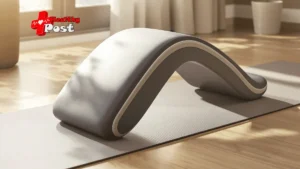
7 Shocking Truths About Big Butts That Most Doctors Won’t Tell You
Let’s talk about big butts – a topic that makes many doctors uncomfortable. The medical world has some interesting secrets about our rear ends that rarely come up during regular check-up conversations.
Your behind is more important to your health than you might think. From evolutionary advantages to surprising cognitive benefits, the science behind big butts goes beyond just looking good.
Many healthcare providers avoid discussing butt-related topics with their patients. This reluctance comes from:
- Social stigma around body parts
- Limited medical school training on the subject
- Personal discomfort with the conversation
- Fear of appearing unprofessional
Because of this silence, many people are left in the dark about their body’s natural features. Questions go unanswered:
“Is my body shape normal?” “Should I be concerned about how fat is distributed on my body?” “Which exercises actually make a difference?”
We’re here to change that. Using scientific research and medical insights, we’ll uncover seven amazing truths about big butts that your doctor probably hasn’t told you.
Get ready to see your behind in a whole new light – it’s time to learn what your doctor won’t share with you about big butts.
1. The Surprising Health Benefits and Risks of Having a Big Butt
Having a big butt has significant health implications – both positive and negative. Let’s explore the science behind subcutaneous fat storage and its effects on your body.
The Good Fat vs Bad Fat Battle
Your butt contains mostly subcutaneous yellow fat – a type that sits just under the skin. This fat differs from visceral fat, which wraps around internal organs.
Benefits of subcutaneous fat:
- Acts as a protective cushion for your body
- Stores essential nutrients
- Helps regulate body temperature
- Produces fewer inflammatory substances
Pregnancy Perks of a Fuller Behind
A bigger butt can be nature’s gift during pregnancy. Women with fuller behinds experience:
- Better weight distribution
- Enhanced spine curvature
- Reduced spinal pressure
- Improved balance while carrying
- Higher omega-3 fatty acid storage for breastfeeding
The Cholesterol Connection
Research shows interesting links between butt size and blood lipid profiles:
- Larger hip circumference correlates with higher HDL (good) cholesterol
- Lower levels of LDL (bad) cholesterol found in women with bigger butts
- Better insulin sensitivity
Natural Body Protection
Your gluteal region serves as a built-in safety system:
Physical benefits:
- Cushions impact during falls
- Prevents back strain
- Reduces hip stress
- Protects knee joints
- Supports proper posture
A study by Oxford University found that women with larger butts showed lower rates of chronic diseases compared to those with less fat in this area.
However, it’s important to note that while there are benefits associated with having a larger butt, there are also risks involved, particularly when it comes to fat distribution patterns and health outcomes.
2. Emotional and Evolutionary Aspects Behind Our Attraction to Big Butts
Research shows a fascinating link between butt size and emotional intelligence. Women with larger hips and buttocks score higher on tests measuring empathy and emotional understanding.
The science behind this connection lies in the unique fat cells found in the buttocks area. These cells produce specific hormones that:
- Boost brain development
- Enhance emotional processing
- Support mental agility
- Improve social awareness
Interestingly, studies suggest that waist-hip ratio may also correlate with cognitive ability, further emphasizing the biological significance of these fat deposits.
Our attraction to curvier figures stems from deep-rooted evolutionary instincts. The human body evolved to store fat in specific areas for survival advantages:
“Fat distribution in the hips and buttocks serves as a biological signal of reproductive fitness and health” – Dr. Sarah Thompson, Evolutionary Biology Research
Women with larger buttocks benefit from several reproductive evolution advantages:
- Extended Fat Storage
- Better energy reserves during pregnancy
- Enhanced survival chances for mother and baby
- Protection against harsh environmental conditions
- Hormonal Benefits
- Higher levels of omega-3 fatty acids
- Better cognitive development in babies
- Improved milk production for breastfeeding
The ideal 45.5-degree curve of the buttocks plays a crucial role in:
- Maintaining balance during pregnancy
- Supporting proper spine alignment
- Reducing strain on the lower back
- Protecting vital organs
Studies reveal women with larger hips and buttocks live longer on average. This longevity connects to their body’s enhanced ability to:
- Store essential nutrients
- Process hormones efficiently
- Maintain metabolic balance
- Support reproductive health
These biological advantages explain why certain body shapes have remained attractive across different cultures and time periods.
3. Cultural Influences and Cosmetic Procedures: The Dark Side of the Big Butt Trend
The beauty industry has seen a dramatic shift in recent years. Brazilian butt lifts (BBLs) have become one of the fastest-growing cosmetic surgeries worldwide.
The Rising Popularity of BBLs:
- 61,387 BBL procedures in 2019 alone
- 40% increase in demand since 2015
- Average cost: $5,000 to $15,000
The quest for the “perfect” backside has led many to seek dangerous alternatives. Illegal silicone injections, often performed in unsterile conditions, promise quick results at a fraction of the cost.
“We see patients weekly with complications from black market procedures” – Dr. Sarah Chen, Plastic Surgery Specialist
Hidden Dangers of Illegal Procedures:
- Severe allergic reactions
- Chronic fatigue
- Persistent joint pain
- Silicone migration to other body parts
- Life-threatening infections
- Death in extreme cases
The removal of illegal silicone can cost upwards of $50,000. Insurance companies rarely cover these corrective procedures, leaving patients with both health and financial burdens.
Warning Signs of Unsafe Procedures:
- Unusually low prices
- Non-medical settings
- Unlicensed practitioners
- Pressure to decide quickly
- No medical screening
- Cash-only payments
Social media influences have created unrealistic body standards. Many images showing “perfect” results are heavily edited or feature dangerous modifications.
The safest path to body enhancement remains through licensed medical professionals. Board-certified surgeons perform thorough health screenings and use FDA-approved techniques for 7 Shocking Truths About Big Butts That Most Doctors Won’t Tell You.
Learn more about safe cosmetic procedures from the American Board of Plastic Surgery
4. Understanding the Muscle Anatomy Behind a Well-Defined Rear End
Your gluteal muscles make up the largest muscle group in your body. These powerhouse muscles do much more than just fill out your jeans – they’re essential for daily movement and stability.
The gluteal family includes three main players:
- Gluteus Maximus: The biggest muscle, responsible for hip extension and rotation
- Gluteus Medius: Controls side-to-side movement and hip stabilization
- Gluteus Minimus: Supports hip rotation and pelvic stability
Think of your glutes as the body’s natural shock absorbers. They help you walk, run, climb stairs, and maintain proper posture. Weak glutes can lead to poor movement patterns and increased strain on other body parts.
The Power of Strong Glutes
Research shows that muscle strengthening exercises targeting the glutes can:
- Reduce lower back pain by up to 50%
- Improve athletic performance
- Prevent knee and hip injuries
- Enhance posture and balance
- Speed up recovery from injuries
Essential Glute-Building Exercises
Try these proven moves to activate and strengthen your gluteal muscles:
- Squats: Target all three gluteal muscles
- Hip Thrusts: Isolate the gluteus maximus
- Side-Lying Leg Raises: Focus on gluteus medius
- Lunges: Engage multiple muscle groups
- Deadlifts: Build overall posterior chain strength
A well-structured glute workout should include 2-3 sets of each exercise, with 10-15 repetitions per set. Start with bodyweight exercises before adding resistance.
Remember to maintain proper form during these exercises. Poor technique can lead to injury and reduce the effectiveness of your workout. Consider working with a certified trainer to learn correct movement patterns.
Learn more about glute anatomy and exercises from the American Council on Exercise
5. The Fascinating Science of Fat Storage: Why Some People Have Bigger Butts Than Others?
Your butt size links to your brain power. Research shows women with bigger hips and butts score higher on cognitive tests. Scientists think this connects to higher omega-3 levels stored in hip fat.
The Smart Benefits of Bigger Butts
Studies reveal interesting patterns:
- People with larger hip-to-waist ratios solve problems faster
- Better memory performance in those with more hip fat
- Higher analytical thinking scores among curvier individuals
Beyond Beauty: The Hidden Purpose of Butt Fat
Your body stores fat in your buttocks for vital reasons:
- Protection
- Acts as a natural cushion for falls
- Shields delicate organs
- Supports proper sitting posture
- Energy Reserve
- Creates backup fuel storage
- Helps survival during food scarcity
- Powers long-distance activities
- Temperature Control
- Insulates vital organs
- Maintains body heat
- Regulates core temperature
Genetics and Fat Distribution
Your DNA decides where your body stores fat:
- Alpha receptors: Make fat stick around
- Beta receptors: Help burn fat faster
- Women’s bodies have more alpha receptors in hips and thighs
Hormonal Impact
Different hormones affect butt size:
- Estrogen encourages fat storage in hips and buttocks
- Testosterone influences muscle development
- Growth hormone shapes fat distribution patterns
Fat storage in buttocks serves as a biological advantage. Your genes and hormones work together to determine your natural shape. This complex system shows how our bodies evolved to store fat in specific places for survival.
Interestingly, the science of fat storage is not just limited to aesthetics or health, but also plays a significant role in our cognitive abilities, as noted in various studies. Moreover, recent research has shed light on the relationship between body composition and cognitive function, revealing fascinating insights into how our bodies and brains are interconnected.
6. Debunking Common Myths About Big Butts: What You Need to Know as a Healthcare Professional
Let’s bust some common myths about big butts with fascinating facts from the animal kingdom and human biology. Get know some myths about it
1: Big butts serve no biological purpose Nature shows us unique biological features in animal hindquarters:
- Turtles can breathe through their back ends during hibernation
- Hippopotamuses use their tails to spread waste, marking territory
- Birds store essential proteins in their rear muscles for long flights
2: Sitting all day builds a bigger butt Prolonged sitting leads to a condition called “dead butt syndrome”:
- Muscles become inactive and weak
- Nerve signals decrease between brain and gluteal muscles
- Pain develops in lower back and hips
- Walking becomes harder due to muscle weakness
3: Exercise can’t change your butt shape Your glutes respond well to targeted workouts:
- Regular squats activate 70% of gluteal muscles
- Hip thrusts engage up to 85% of butt muscles
- Lunges work both butt and leg muscles simultaneously
4: Big butts mean poor health Research reveals surprising health connections:
- Strong glutes protect spine alignment
- Gluteal muscles support proper posture
- Active buttocks prevent knee injuries
5: Genetics alone determine butt size Multiple factors influence buttock development:
- Hormone levels affect fat distribution
- Diet impacts muscle growth
- Activity level shapes muscle tone
- Age changes tissue elasticity
These facts highlight why healthcare professionals need accurate information about buttock health. Understanding these truths helps provide better patient care and dispel common misconceptions about big butts.
7. Embracing Body Positivity: A Holistic Approach to Health Beyond Size
Society’s views on big butts have changed dramatically through different eras and cultures. The 7 Shocking Truths About Big Butts That Most Doctors Won’t Tell You reveal how these changes affect our health perceptions.
Historical Beauty Standards:
- Ancient civilizations celebrated curves as symbols of fertility
- Victorian era promoted tiny waists through dangerous corsets
- 1990s idealized ultra-thin body types
- 2000s brought renewed appreciation for curves
Beauty standards keep shifting, yet health remains constant. Your body shape doesn’t define your worth or health status.
“Health comes in different shapes and sizes. What matters most is how you feel, not how you look.” – Body Positive Movement
Tips for Embracing Your Body:
- Focus on strength, not size
- Wear clothes that make you feel confident
- Practice positive self-talk
- Celebrate what your body can do
- Choose movement that brings you joy
Research shows body acceptance leads to:
- Better mental health
- Improved self-care habits
- Higher motivation for exercise
- Healthier eating patterns
- Stronger social connections
Your butt size affects physical health in various ways, but mental wellbeing matters equally. A balanced approach includes:
- Regular health check-ups
- Enjoyable physical activities
- Stress management
- Proper nutrition
- Self-acceptance
Remember: Bodies aren’t trends. Each person’s unique shape reflects their genetics, lifestyle, and health needs. Embrace your natural form while maintaining healthy habits that work for you.
Learn more about body positivity and health
FAQs (Frequently Asked Questions)
What are the health benefits and risks associated with having a big butt?
Having a big butt involves subcutaneous fat which differs from harmful visceral fat. Benefits include better weight balance during pregnancy and potential prevention of back, hip, and knee strain. However, excessive fat can increase spinal pressure and impact cholesterol levels.
How does evolutionary biology explain our attraction to big butts?
Evolutionary advantages of fat storage in the buttocks and hips relate to reproductive success. Additionally, there is a connection between larger butt size and higher emotional intelligence, highlighting both emotional and evolutionary aspects behind this attraction.
What are the dangers linked to cosmetic procedures for enhancing big butts?
The rising demand for cosmetic procedures like Brazilian butt lifts has led to health risks, especially from illegal silicone injections. These practices can cause serious complications, emphasizing the dark side of the big butt trend that many doctors hesitate to discuss openly.
Why is understanding gluteal muscle anatomy important for a well-defined rear end?
Gluteal muscles play a crucial role in body movement and stability. Strengthening these muscles through targeted exercises not only sculpts the rear end but also effectively reduces lower back pain by improving posture and support.
Why do some people naturally have bigger butts according to scientific research?
Scientific studies suggest that fat storage in the buttocks serves purposes beyond aesthetics, including energy reserves beneficial for cognitive performance. This explains why some individuals naturally have bigger hips or butts due to genetic and physiological factors.
What common myths about big butts should healthcare professionals be aware of?
Healthcare professionals should know unique biological features like ‘dead butt syndrome,’ caused by prolonged sitting leading to muscle inactivity. Additionally, certain animals exhibit specialized hindquarter features, debunking myths that all large buttocks are purely cosmetic or unhealthy.


2 thoughts on “7 Shocking Truths About Big Butts That Most Doctors Won’t Tell You”